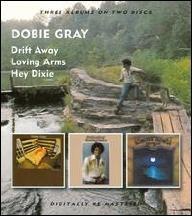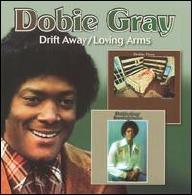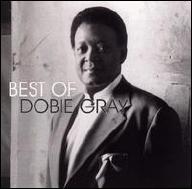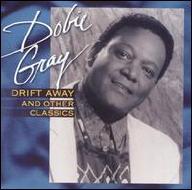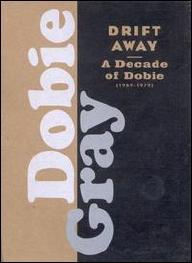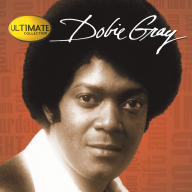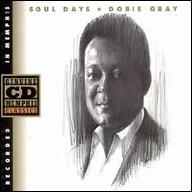Before adopting the name Dobie Gray, he recorded several singles under the names Leonard Ainsworth, Larry Curtis, and Larry Dennis. His seventh single, Look at Me, became his first chart hit in 1963, but his true breakout was a 1965 recording of The 'In' Crowd, whose Motown-style bounce distinguished it from jazzman Ramsey Lewis' celebrated version. Gray hit the Top 20 with The 'In' Crowd and also had some success with the follow-up, See You at the Go-Go; this period -- spent mostly on the small, poorly distributed Cordak, Charger, and White Whale labels -- was the most soul-oriented of his career. It would be some time before Gray returned to the charts; in the meantime, he pursued a concurrent acting career, eventually spending two and a half years with the Los Angeles production of +Hair. During his +Hair years, Gray also sang with the band Pollution, which recorded two albums on Prophecy beginning in 1971.
In 1972, Gray resurfaced as a solo artist on MCA, with producer/songwriter Mentor Williams in his camp. Gray promptly scored the biggest hit of his career with the Williams-penned Drift Away, which hit the Top Five in early 1973 and remains an oldies-radio staple today. The subsequent Loving Arms, written by Tom Jans, grew into a much-covered repertory item, recorded by singers from the realms of rock, country, and RB. Gray's own sound was shifting more toward country as well, and when he moved to Capricorn in 1975, he recorded in Nashville with new songwriting collaborator Troy Seals (he eventually relocated there permanently). Gray's popularity in Europe and Africa was growing steadily, and he managed to talk South African authorities into allowing him to play to integrated audiences during the apartheid era.
Gray's tenure in Nashville was marked by a commercial downturn, but his increased activity as a songwriter -- mostly in a country vein -- resulted in covers by the likes of Don Williams, Charley Pride, George Jones, and John Denver, among others. The disco-flavored You Can Do It became his final Top 40 hit in 1978, the same year he recorded the first of two LPs for Infinity. When Infinity went bankrupt, Gray concentrated exclusively on songwriting for a few years, then re-emerged on Capitol in the mid-'80s as a full-fledged country artist. He made the lower reaches of the country charts with singles like That's One to Grow On and From Where I Stand, but found it impossible to break through to a wider country audience, and again faded from view after two albums. In 1997, Gray released Diamond Cuts, a mix of new songs and re-recorded past hits. ~ Steve Huey, Rovi



